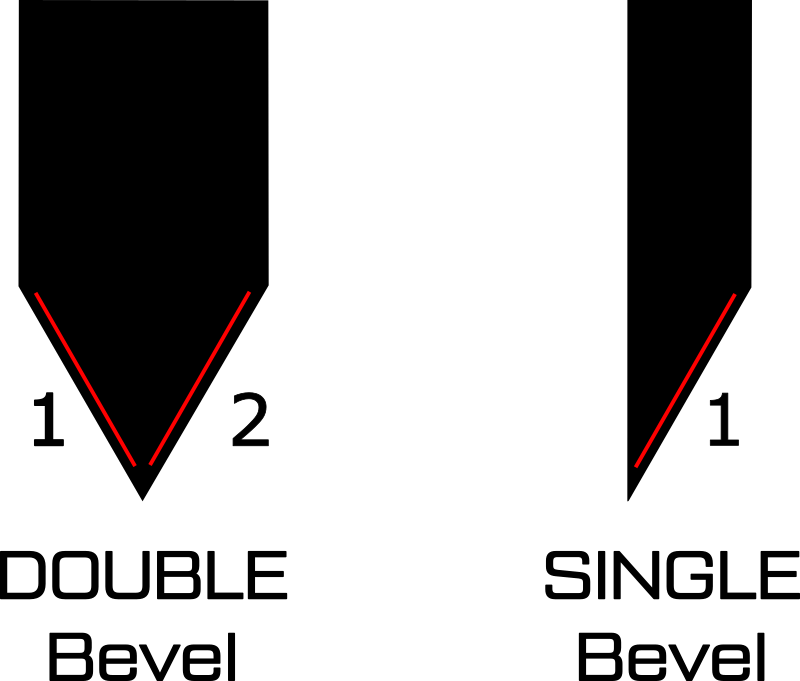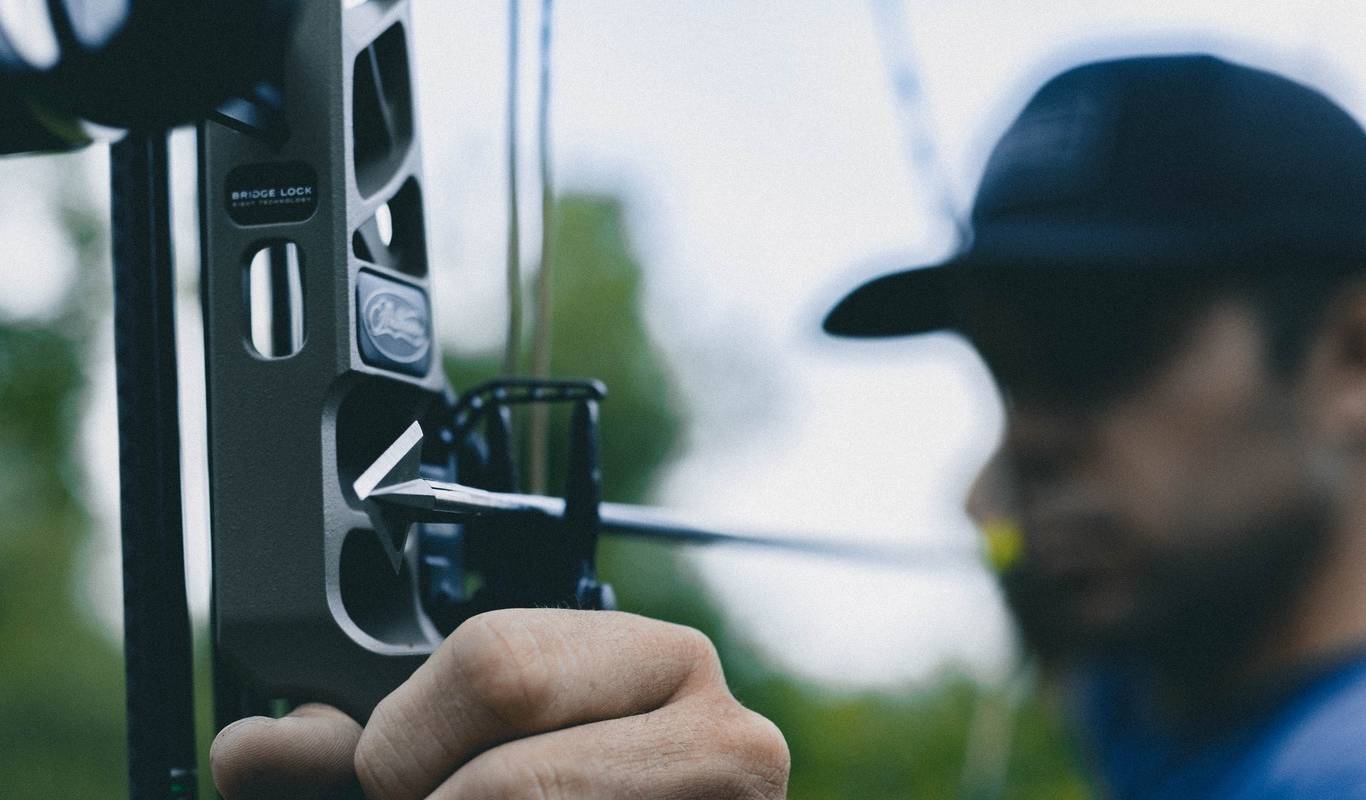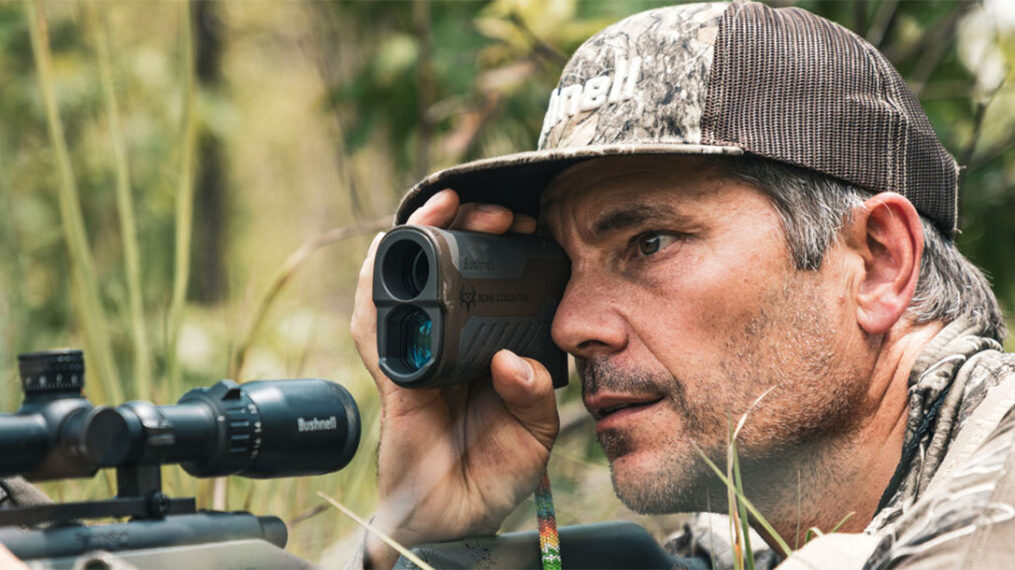It’s no secret I love single bevel broadheads. Around 2010 is when my brother introduced me to Dr. Ashby and the concept of heavy arrows. Growing up, the trend was shooting arrows as fast as possible which meant as light of an arrow as possible. My brother asked me a simple question that made it click for me: Would you rather be hit by a tennis ball going 20 mph or a brick going 10mph?
Maybe that’s too simple for such a deep rabbit hole but it gets to the essence of why more mass in an arrow can aid in penetration of the quarry’s cavity and it’s bones. We aren’t going to drive down that hole but instead I’ll speak on what came out of my fascination with getting great passthroughs with high momentum: single bevel broadheads. I didn’t start out shooting single bevels. I started with way too heavy (I admit it!) two blade double bevels, with three and four blade double bevels sprinkled in heavily, until finally settling into single bevels. The recent years have been a boon for selection when before we didn’t have really much choice on the open market.
Single bevel broadheads are better than double bevels, hands down. My long experience with both single and double bevel two blades has shown that the holes are bigger, I get better penetration through bone and the wound channel is longer giving me greater damage and blood lose. I know this is hotly contested even down to whether or not bleeder blades should be run but I’m just gonna tell you what I know and what I’ve found.
Penetration
The effectiveness of a broadhead is pretty tightly linked with its ability to penetrate. You don’t want to puncture just one lung – you need to deflate both to put down an animal; especially, say, a rutting bull elk. Even better, you’ll want to bury it deep in the pump house and lacerate the heart and it’s arteries. Test after test has proven that fixed blades outperform mechanicals for penetration depth so lets leave that for another class. I’m shooting a cut on contact head that is thick and reusable without go-go-gadget gizmo blades to go wrong. I tune my bow properly to achieve proper arrow flight and target shoot my broadheads to verify.
Penetration depth is ultimately a function of momentum and friction. Mechanicals depend on robbing some of the momentum of the arrow to engage the mechanism for the blades to open and then beginning the cut. Depending on the design a number of different things can happen and the amount of momentum taken will vary. In the end, I won’t take chances with the potential for failure of a mechanical especially since I know I’ll be getting better penetration with a fixed blade.
Do you get better penetration with double bevel vs single? I haven’t really noticed a different unless bone is in the path. Like I said, the wound channel is different and the entry/exit hole is larger, I’ve blasted silver dollar size holes through scalpulas, and I’ve broken through shoulder knuckles with single bevels. I’ve done close to the same with double bevels so the difference is slight but the odds definitely favor the single bevel. The penetration of single bevels is top of the class have no doubt, but it’s not the only thing going in its favor.
Wound Channels
A broadhead’s sole purpose is to create wounds that cause rapid blood loss and a quick, humane kill. The larger the wound channel the faster your target bleeds out. Conversely, the wider and larger the broadhead the less penetration due to increased friction. More blades also can negatively impact penetration as well.
Now we all get to an age where we understand that no system is perfect and everything comes with a price, and so it is with broadhead designs. The less blades on the broadhead, the less cutting your broadhead will be doing and vis-versa. The width of the blade follows the same rule.

If you look at your common pocket knife you will see two bevels, one on either side. This is the most common way to sharpen a piece of steel. When cutting with a double bevel it applies equal pressure to both sides of the knife, allowing for a path that is directly inline with the pushing force – perfect for most applications like a knife. Single bevels, instead of traveling square (90°) to the direction being pushed, will cut a path following the same angle as the bevel because there is no opposing bevel to match its force. If you’ve ever beat a chisel into wood, you know what I’m talking about.
What’s this got to do with a broadhead? Well if you put two of those single bevels in the same plane on either side of a ferrule, you’ll induce a spin because both of those bevels will be pushing in the same direction. Why do we want spin? More spin means more cutting. Take any two points and draw a straight line between them, then draw a curve between them. The curve is longer, right? Same thing with a broadhead traveling through organs. A double bevel will be straight, and the single bevel will be a spiral cut. The longer the cut, the more damage.
My logic is a single bevel allows me reduce the number of blades because of it’s longer effective cut which means I have less mass touching the meat as it travels through. It has been my experience that the holes left in an animal with a single bevel of the same size broadhead vs a double bevel is much larger. A discernible difference at that! On a standard quartering away shot where the entrance will be further back into the intestines I’ve noticed guts hanging out when otherwise I would have not with a double bevel.
Another advantage is the wedge action that happens when a single bevel encounters bone. I don’t feel fear of a misplaced shot and shoulder joints anymore should I happen to hit one, and I have much more faith in frontal shots on elk or even deer now. Here is a quote from Dr. Ashby’s Why Single-Bevel Broadheads:
The bone’s pressure against the single-bevel tries to rotate (twist) the entire broadhead about 70 degrees during its 3-1/8″ of travel through the bone. This exerts significant lateral pressure. Try sticking even a very thin knife blade through a bone and rotating it just a few degrees; the bone splits big-time, and resistance to penetration drops instantly and dramatically.
Felt Impact
Have you ever shot a deer and watched it tip over, unaware that it had even been shot? I have, and a lot more than once. How could that be? Well if you consider that more surface area (more blades) of a broadhead needs more friction to cut then you may intuit how that could increase the initial “punch” upon impact. I firmly believe that a sufficiently sharp two blade broadhead with no bleeders on an unalert elk or deer sent double lung will 9 times out of 10 end with you watching that animal fall over dead. I like to think of a fixed two blade as “slipping through” the animal. From impact, it’s cutting immediately and no energy is wasted.
Now, on the other side of the spectrum, imagine you take a 2″ cut mechanical and send that double lung. It first hits the animal and uses the skin/meat to expand the blades, then cuts a (if everything goes correctly) 4″ laceration through it. The initial hit is about like you punched the animal. It knows it’s been hit and it’s getting the heck outta dodge.
Another way to put it is like getting stung by a mosquito vs a horse fly. The animal will hear your bow release and still respond to the shot but as long as it just feels the sting of that mosquito it won’t run far. A couple feet at most before settling down and assuming maybe the sound was just a branch falling off a tree. It usually won’t associate a small pain with the noise of a bow firing. Now, if it hears your bow go off and SMACK a horse fly punches it in the shoulder? That deer is getting far from the area as quick as it can. That noise and that punch are directly associated together. That translates to a longer track job and a possible lost deer. An unalarmed deer is liable to stay very close and will die close.
This is more of an argument for just two blades. I haven’t noticed a difference in felt impact between single and double bevels but I wanted to bring it up as a reason to choose a two blade fixed head.
Disadvantages Of a Single Bevel
Blood trails are the only thing I would say are a possible disadvantage. Mechanical broadheads truly can cut a very wide, gaping hole that bleeds profusely but at the cost of potential failure in opening and also felt impact. When any broadhead cuts and enters high in the cavity at a shallow angle it’s possible for little to no blood to escape and fill the cavity or lungs. It still can escape from the mouth and nose effectively drowning the animal but sometimes, for whatever reason, you just won’t get a solid blood trail. More often then not the blood trail won’t really present itself until 10 to 20 yards from the shot if the animal did spook hard.
The smaller the wound on the animal the more likely it can close up and stop bleeding. I’ve had it happen before and sometimes I’ve sadly not been able to recover. On the occasion I don’t get a blood trail with a well placed shot I usually find the animal close by in what looks like a massacre of blood, sometimes it just takes a little more work to locate it.
The single bevel does leave a bigger, better hole than a double bevel and aids in leaving a better blood trail but a mechanical or a three/four blade broadhead will undoubtedly leave a better blood trail. I’m ok sacrificing an easy to follow blood trail for a spotty one given all the gains we talked about before.
Ultimately if you’re choosing to shoot a two blade fixed broadhead you’ve got two options for bevels. Hopefully I’ve convinced you of reasons you should try a two blade. If you do, a single bevel in my experience gives a slight advantage over a double bevel at zero extra cost (depending on which broadhead you buy of course). With so many broadheads available to choose from you’ll have to make your decision on which sacrifices you’re willing to take into the field this year.






